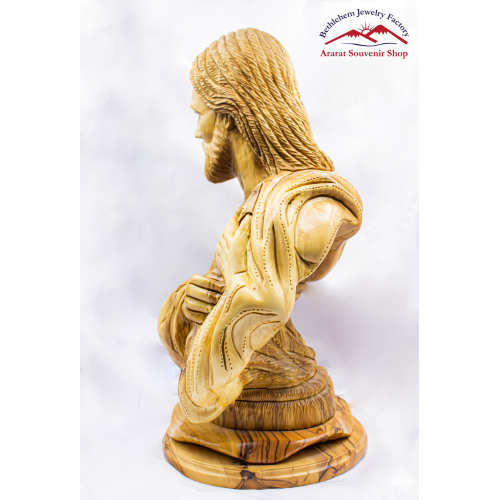Jesus The Shepherd
In the Gospel of John, Jesus states “I am the good shepherd” in two verses, John 10:11 and 10:14. I am the good shepherd. The good shepherd lays down his life for the sheep. He who is a hired hand, and not a shepherd, who doesn’t own the sheep, sees the wolf coming, leaves the sheep, and flees.
The imagery of Jesus as the shepherd is a profound and comforting metaphor that resonates deeply within the Christian faith. Rooted in ancient biblical texts, this portrayal encapsulates themes of guidance, protection, and love. The most famous reference appears in John 10:11, where Jesus declares, “I am the good shepherd. The good shepherd lays down his life for the sheep.” This statement reveals not only the sacrificial nature of Christ’s mission but also emphasizes his deep commitment to the well-being of his followers.
In biblical times, shepherds were known for their intimate knowledge of the sheep in their care. They would lead their flocks to lush pastures and still waters, ensuring that each sheep received the nourishment it needed to thrive. This pastoral imagery paints a vivid picture of Jesus’ role; he is portrayed as one who guides his followers to spiritual sustenance, offering them rest and peace in a tumultuous world. The concept of Jesus as the shepherd evokes Psalms 23, a passage that beautifully articulates God’s care. “The Lord is my shepherd; I shall not want. He makes me lie down in green pastures. He leads me beside still waters.” This connection reflects a deep yearning for divine companionship and provision.
The shepherd’s role also embodies vigilance and protection. In ancient Israel, shepherds faced various dangers, including wild animals and treacherous terrains. Jesus, as the shepherd, is depicted as one who stands guard over his flock, defending them against harm and temptation. This protective aspect is evident in the parable of the lost sheep, recounted in Luke 15:3-7. Here, Jesus tells of a shepherd who leaves the ninety-nine sheep to seek out the one that is lost. This parable highlights the loving and relentless pursuit of Jesus for each individual, emphasizing that no one is insignificant or beyond redemption in his eyes. His willingness to seek out the lost reinforces the message of grace, illustrating that every soul matters deeply to him.
Moreover, the shepherd metaphor fosters a sense of community among believers. In the early church, followers of Christ would come together, each contributing to the spiritual welfare of one another. This communal aspect mirrors a shepherd tending to a flock, where each sheep plays a vital role in the collective wellbeing. The relationship between the shepherd and the sheep teaches the value of mutual care, interdependence, and love among members of the faith community. Believers are called to reflect the characteristics of Jesus, serving as shepherds to one another, offering guidance and support in their spiritual journeys.
In addition to being a guide and protector, Jesus as the shepherd also emphasizes the concept of self-sacrifice. The reference to laying down one’s life is central to the Christian narrative of salvation. Jesus’ ultimate sacrifice on the cross serves as the ultimate act of love and commitment to his followers. This willingness to endure suffering for the sake of others is what sets Jesus apart—the good shepherd embodies unconditional love and foresight, understanding the profound depths of human need and struggle. His death and resurrection offer hope and redemption, assuring believers of eternal life.
The image of Jesus as the shepherd also extends beyond the individual to encompass the whole of creation. In recognizing Jesus as the shepherd of not only his followers but the entire world, one acknowledges a broad compassion that transcends cultural, social, and geographical boundaries. This universal aspect challenges believers to extend love and grace to all, inviting them to participate in the shepherding role by tending to the marginalized, the poor, and those in distress.
In contemporary spirituality, the concept of Jesus as the shepherd continues to provide comfort and reassurance. Many find solace in prayer, seeking guidance and support in life’s challenges. The imagery of Jesus as a loving shepherd invokes a sense of security, reminding believers that they are not alone in their struggles. This relationship fosters a deeper sense of trust in God’s plan, encouraging individuals to release their anxieties and fears into the hands of their divine shepherd.
In conclusion, the metaphor of Jesus as the shepherd is rich with meaning and significance, encapsulating love, guidance, sacrifice, and community. Through this imagery, believers are reminded of their inherent worth and the depth of God’s care for them. The good shepherd calls everyone into a relationship marked by trust, support, and love, encouraging individuals to reflect that care in their own lives. As followers of Christ continue to embrace this beautiful portrayal, they are invited to share the good news of hope and redemption, walking alongside one another as fellow travelers in faith. This pastoral image ultimately evokes a profound sense of belonging, underscoring the truth that each person is cherished and valued in the eyes of the divine shepherd.












Reviews
There are no reviews yet.